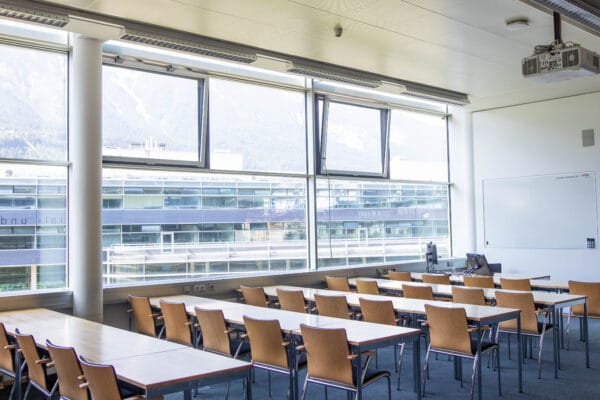
NAME:
MCI - SR 303
BUILDING:
Management Center Innsbruck
FLOOR:
3
TYPE:
Seminar Room
CAPACITY:
54
ACCESS:
Only Participants
EQUIPMENT:
Beamer, Handicapped Accessible, PC, Sound System, Whiteboard, WLAN (Eduroam), Microphones
Topographic change estimation is an essential requirement to investigate where, when, how, and why Earth surface processes occur, especially regarding rigid spatial movements and non-rigid shape changes of local surfaces. For area-wide geomorphologic process detection and quantification, 3D laser scanning is widely utilized to survey topographic surfaces. The resulting 3D point clouds have advantages over those derived from other remote sensing methods in observation accuracy, dimension, resolution, and the ability to penetrate high vegetation canopy. However, there are several challenges involved in estimating topographic changes in mountainous terrain, such as point cloud heterogeneities, rough topographic surfaces, and complex topographic changes. Unlike point-to-point comparison in existing studies, this research works on these challenges by considering topographic dynamics as a deformation of Riemann manifold surfaces. This new perspective makes it possible to comprehensively understand complex topographic dynamics by separating rigid and non-rigid surface changes. More specifically, to capture the topographic changes for all points in point clouds and avoid the difficulty caused by global topographic roughness, we adaptively represent Riemann manifold surfaces within the local scope of each observation based on polynomial functions. Then, both rigid (i.e., translation & rotation) and non-rigid (i.e., stretch & distortion) topographic changes are estimated from pairwise point clouds, by computing the transformation parameters and the deformation tensors of the Riemann manifold surfaces. Moreover, to detect significant changes, the errors occurring in point cloud acquisition and processing (e.g., registration errors, surface fitting) are considered to quantify the uncertainties by error propagation. The proposed method is tested in a mountain region (Sellrain, Tyrol, Austria), where an extreme rainfall event triggered a large number of landslides in 2015. The area has been surveyed by airborne laser scanning in 2013 and 2017. By applying various topographic change features (i.e., translation, rotation, stretch, and distortion), we identify different topographic processes (e.g., identified 84 out of a total of 88 reference landslides) and analyse their spatial change patterns via clustering analysis. The result demonstrates the effectiveness and applicability of the proposed method for estimation and interpretation of topographic changes in mountains.
